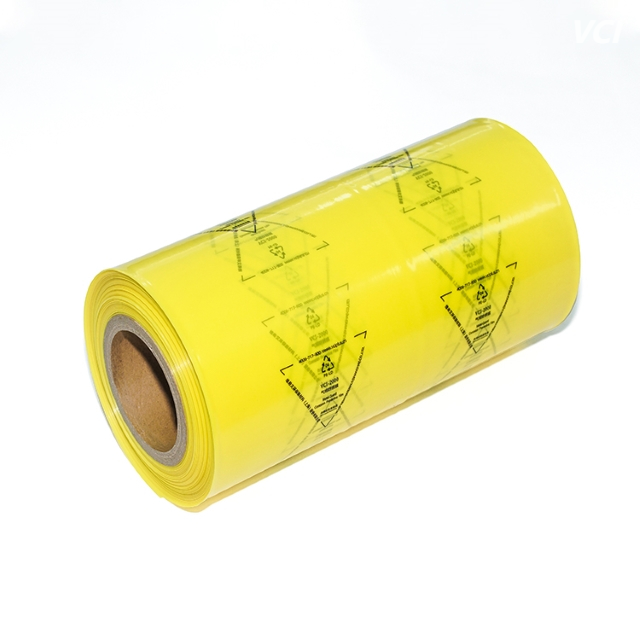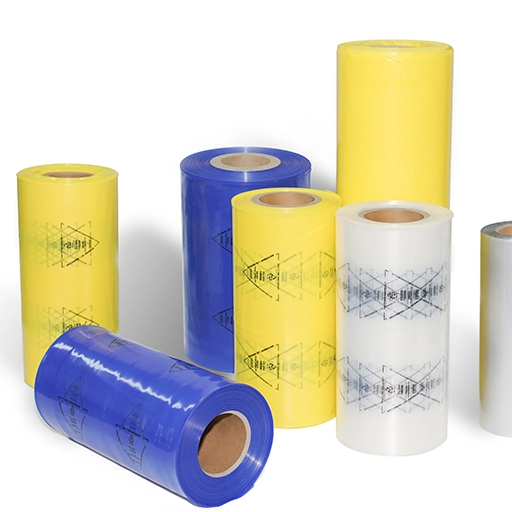Views: 0 Author: Site Editor Publish Time: 2025-05-26 Origin: Site





Electric vehicles (EVs) are transforming the transportation sector, offering cleaner alternatives to gasoline-powered cars and helping to reduce global carbon emissions. At the heart of every EV lies a complex battery pack, often composed of dozens—or even hundreds—of individual lithium-ion cells. These cells and their supporting hardware represent a significant portion of an EV’s cost, and they must be protected rigorously during every stage of manufacturing, shipping, storage, and assembly. Corrosion is one of the most insidious threats to battery reliability: even microscopic oxidation on a metal surface can impede electrical conductivity, degrade performance, or trigger safety hazards.
Electric vehicle battery packs incorporate various metal components—current collectors (typically copper or aluminum foils), bus bars, terminals, and mechanical fasteners. During production, these parts are often soldered, welded, or mechanically crimped together, creating points where protective coatings may be incomplete or damaged. When battery modules are moved from cell production lines to module assembly, or from assembly plants to vehicle manufacturers, they can endure:
Humidity and Condensation: Temperature fluctuations in shipping containers can cause moisture to condense on cold surfaces, directly contacting exposed metal areas.
Salt and Airborne Contaminants: Coastal manufacturing or port storage areas expose parts to airborne salt particles and industrial pollutants that accelerate oxidation.
Mechanical Handling: Scuffs and scratches during handling can remove thin lacquer coatings, leaving localized bare metal that corrodes rapidly.
The cumulative effect of these exposure events can result in corrosion layers measured in microns—but even these tiny films of rust raise electrical resistance and can compromise the tight tolerances required for high-performance EV cells.

Historically, manufacturers have relied on several techniques to mitigate corrosion risk:
Grease and Oil Coatings
Thick layers of corrosion-inhibiting grease or oil are applied to bus bars, terminals, and metal housings. While effective at repelling moisture, these coatings attract dust and can migrate during transit, leading to messy work areas and extra cleaning steps.
Solvent-Based Varnishes and Lacquers
Thin-film polymer coatings protect surfaces more cleanly than grease but require controlled drying ovens and solvent recovery systems. Some solvents present health and environmental concerns, and the coatings can crack under thermal cycling.
Powder Coatings
Electrostatic application of polymer powders creates robust, uniform barriers. However, powder coating requires elevated-temperature curing and often cannot reach the intricate internal geometries of battery modules.
Desiccants and Sealed Enclosures
Silica gel packets or moisture-absorbing papers are placed inside packaging, and sealable foil bags are used. Desiccants can only protect until saturated, and foil bags add weight and disposal complexity.
Each of these methods presents trade-offs in terms of cost, handling, and environmental impact. Moreover, none of them offer true “self-healing” protection if coatings are scratched or desiccants become exhausted.
Battery cells are manufactured in low-humidity environments, but once the modules leave humidity-controlled assembly lines, they can encounter sudden exposure to ambient air. Copper and aluminum current collectors oxidize readily when water molecules adsorb onto their surfaces. This oxidation layer increases electrical resistance, leading to uneven current distribution during charging and discharging. Over time, higher resistance zones heat up preferentially, accelerating cell degradation and reducing overall battery life.
Lithium-ion cells contain organic solvent-based electrolytes that can vaporize when battery packs sit idle at elevated temperatures—such as under direct sunlight on a storage tarmac. These vapors may condense on cooler metal surfaces elsewhere within the pack enclosure, reacting with humidity to form corrosive byproducts. Blackened or pitted spots on terminal contacts often trace back to these localized attack scenarios, which are difficult to prevent with conventional coatings alone.

VCI films are thin polymer sheets impregnated with organic corrosion inhibitors. Once the film is wrapped around a component—or placed inside an enclosing bag—the inhibitors slowly sublimate, releasing vapor molecules that permeate the enclosed air space. Unlike grease or desiccants, which protect only direct contact surfaces or absorb moisture, VCI vapor fills every void, reaching hidden weld seams, threaded fasteners, and internal crevices. By uniformly coating metal surfaces with inhibitor molecules, VCI films create an omnipresent protective atmosphere.
When VCI vapor encounters a metal surface, inhibitor molecules adsorb and form a nanoscopic, passivating film. This film is typically only a few molecules thick—so thin that it does not affect electrical conductivity or interfere with soldering processes. Yet it effectively blocks water and oxygen from reacting with the metal substrate. Should the film layer be disrupted—for example, by handling or thermal expansion—it automatically reforms as vaporized inhibitor replenishes the surface coverage.
Independent laboratory tests subject VCI-wrapped components to accelerated corrosion environments, such as ASTM B117 salt-fog chambers (5% NaCl spray) and 85°C/85% RH humidity chambers. In comparative studies:
Unwrapped Controls: Showed visible rust within 24–48 hours.
Grease-Coated Samples: Delayed rust onset to 72–96 hours but produced oily residues and exhibited uneven coverage.
VCI-Wrapped Samples: Remained corrosion-free for over 1,000 hours, with no visible oxidation or residue, demonstrating superior longevity.
When researchers measured surface roughness and contact resistance after exposure, VCI-protected panels maintained baseline roughness (Ra) values and showed no increase in electrical resistance. In contrast, grease and lacquer controls exhibited 10–15% higher resistance due to localized corrosion spots and cleaning residues.
A major EV battery manufacturer trialed VCI film packaging for module shipments through a tropical port with average relative humidity above 80%. Traditional grease-packed modules required a 2-hour degreasing process upon arrival, delaying assembly. VCI-wrapped modules, however, bypassed cleaning entirely. Inspectors found zero corrosion on any of the 120 trial shipments, saving over 240 man-hours of degreasing labor and cutting dock-to-line time by 30%.
Over a six-month storage period at ambient conditions (20–40°C, 40–90% RH), modules wrapped in VCI film exhibited less than 2% increase in average cell impedance. Identical modules packaged with grease saw impedance rise by 8–10%, translating into decreased energy throughput and potential warranty claims. The VCI-protected packs not only arrived installation-ready but also delivered more consistent performance once in service.
Protecting electric vehicle batteries from corrosion during storage and transport is critical for ensuring performance, safety, and customer satisfaction. Traditional methods—grease coatings, varnishes, desiccants—often fall short in covering hard-to-reach areas, add cleanup steps, and carry environmental or health risks. In contrast, VCI films leverage vapor-phase inhibitors to create an invisible, self-replenishing shield that reaches every surface, from external housings to internal welds.
Laboratory tests confirm VCI film’s superior salt-fog and humidity resistance, while real-world deployments demonstrate tangible savings in degreasing labor, reduced impedance drift, and elimination of unplanned rework. By investing in VCI film packaging, EV battery manufacturers and integrators can:
Streamline Logistics: Lightweight, residue-free film cuts shipping and handling costs.
Accelerate Assembly: No post-arrival cleaning means faster line-side integration.
Enhance Reliability: Lower corrosion risk reduces warranty claims and performance variability.
Support Sustainability: Polyolefin films are recyclable, and oil-free protection aligns with green manufacturing goals.
Discover how VCI EP NEW MATERIALS (SHANGHAI) CO., LTD. can help you implement advanced VCI film solutions tailored to electric vehicle battery applications. Visit us at www.vcipluspacking.com to download technical datasheets, explore case studies, and review life-cycle cost analyses. Our expert team is ready to provide personalized consultations, pilot-scale trials, and rapid technical support. Protect your batteries, streamline your operations, and drive sustainable performance—partner with VCI EP today.
